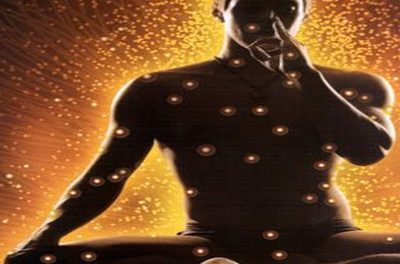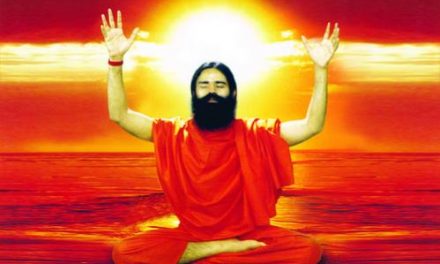The philosophy of Yoga is centered around achieving complete harmony between our body and mind through special exercise (posturing), breathing and meditation. The aim of Yoga is to live a healthy living and attain self-enlightenment. Yoga means to yoke (to unite) with the source of our Being.
In Yoga through practices of holding a variety of body positions or asanas, and the centering of the mind and breath in a meditative way, the practitioner increases body awareness, posture, flexibility of body and mind and calmness of spirit. To achieve this an individual has to gain complete control over ‘prana’. Prana is the subtle force , the essence which pervades all life . The objective of Pranayama is to attain complete control of the Prana .It is the breathing process or the control of the motion of inhalation, exhalation and the retention of vital energy.
Baba Ramdev Maharaj ji a Yoga and Ayurved master, who has become very popular in India, and has popularized yoga among millions of his followers. He established Divya Yoga Mandir Trust in 1995 in Kankhal (Haridwar) and began activities in health and spiritual pursuits and has cured many incurable diseases since then. Now thousands of people everyday attend his Yoga camps.Yoga was always there, but he has given a new birth to it by bringing it to public and benefiting people with it. He has helped Yoga become so popular among common man. He has done so by curing many incurable diseases. He is responsible for a revolution in Yoga and health.
He believes that “the Aryavrat desh(ancient India) will again become vishva guru (world leader) through yoga”. He dreams of a disease free India and World (rog mukt bharat aur vishva).
A few of Pranayama exercises that Swami Ramdev recommends for everyday practice are :
1. Bhastrika Pranayam
Procedure: Take deep breaths and then completely breathe out.
Duration: 2 mins at least. 5 mins max.
Benefits: heart, lungs, brain, depression, migraine, paralysis, neural system, aabha
2. Kapal Bhati Pranayam
Procedure: Push air forcefully out. Stomach will itself go in.
Duration: Start with 30 times or 1 min. increase up to 5 mins min. up to 10 mins max.
Benefits: aabha, tej, obesity, constipation, gastric, acidity, Croesus(liver), hepatitis B, uterus, diabetes, stomach problems, cholesterol, allergic problems, asthma, snoring, concentration, and even cancer and AIDS.
Tips: heart and high BP patients, and weak people do it slowly.
Swamiji says “dharti ki sanjivini hai kapal-bhati pranayam” and that it “cures all diseases of world”.
3. Baharya Pranayam
Procedure: Breathe air out, touch chin to chest, squeeze stomach completely and hold for a while. then release chin, breathe in slowly.
Duration: 3 times to 5 times normally. max up to 11 times. and extremely max up to 21 times (in winters).
Benefits: stomach (udar), hernia, urinal, uterus
Tips: not for heart and high BP patients
4. Anulom Vilom Pranayam
Procedure: Hold your right nasal with thumb, breathe in from left. Now open right nasal and close left nasal with middle and ring finger and breathe out from right nasal. Now breathe in from right nasal. Now close right nasal and open left and breathe out and in from left nasal. and so on.
Duration: at least 10 mins.
Benefits: heart, high BP, heart blockage, vatta-kapha-pitta, arthritis, cartilage, bent ligaments, sinual fluid reduced, parkinson, paralysis, neural related, depression, migraine pain, asthma, sinus, allergy
Tips: breathe into lungs not to stomach. no organ in stomach absorb oxygen. Do not hurry. Do it slowly. Rest whenever needed (in any pranayam).
5. Bhramari Pranayam
Procedure: Close ears with thumb, index finger on forehead, and rest three on base of nose touching eyes. Breathe in. And now breathe out through nose while humming like a bee.
Duration: 10 mins
Benefits: tension, hypertension, high BP, heart, heart blockage, paralysis, migraine pain, confidence, concentration
6. Udgeeth Pranayam
Procedure: Breathe in deeply, and chant ‘Om’-kar. OOOOOOm ( long O and small m )
Duration: 10 mins or more
Benefits: meditation








